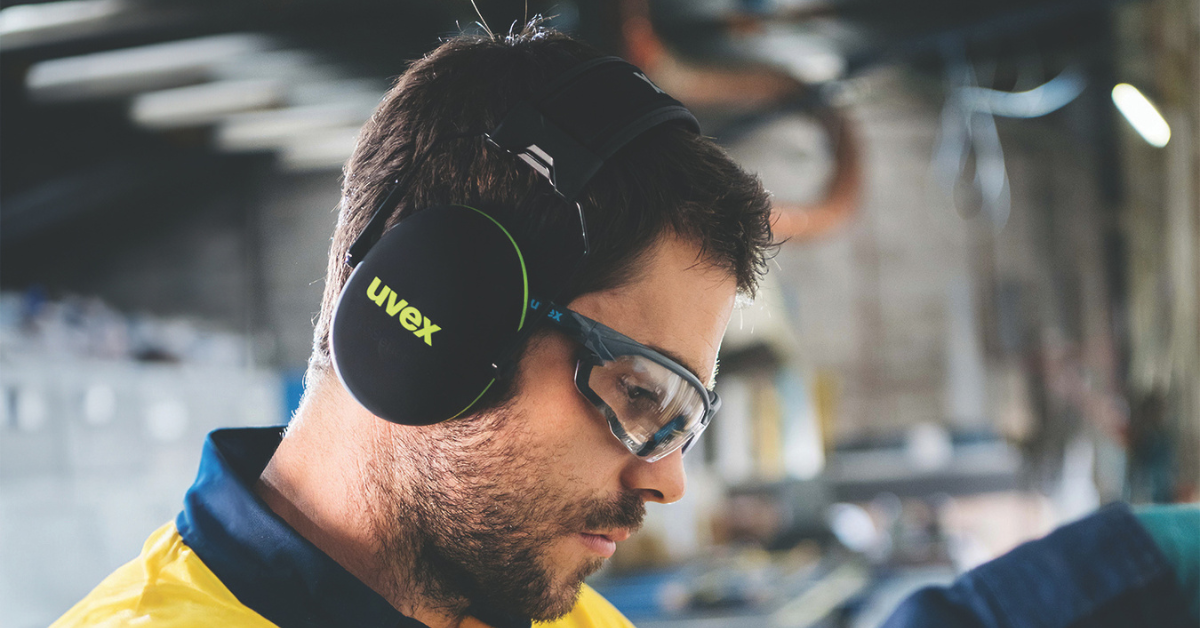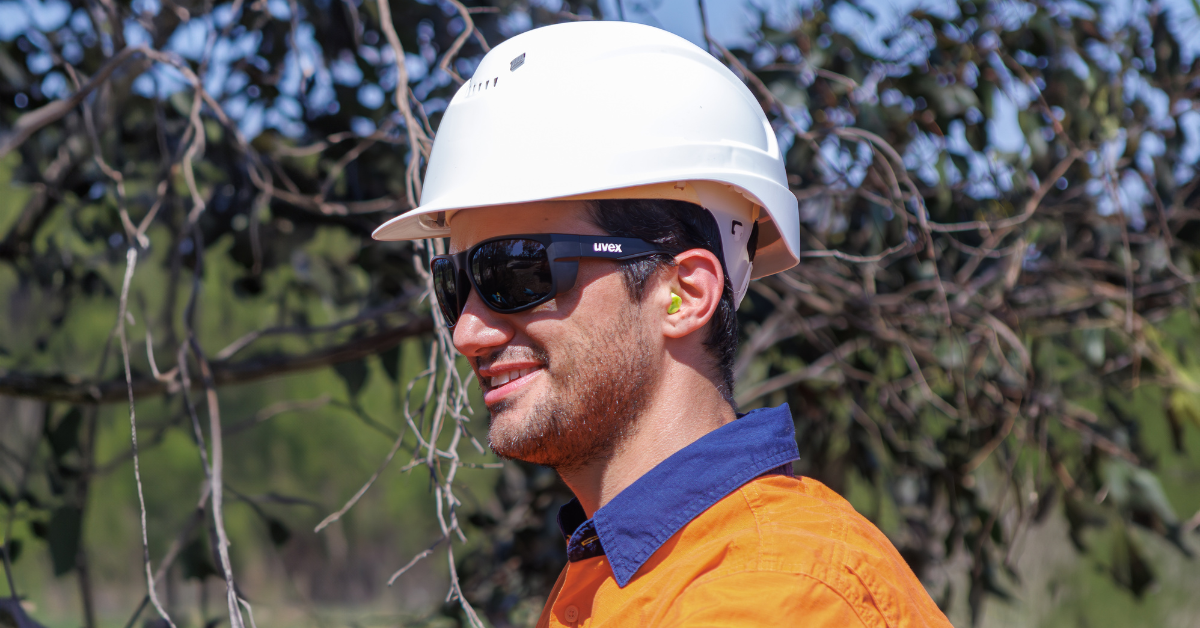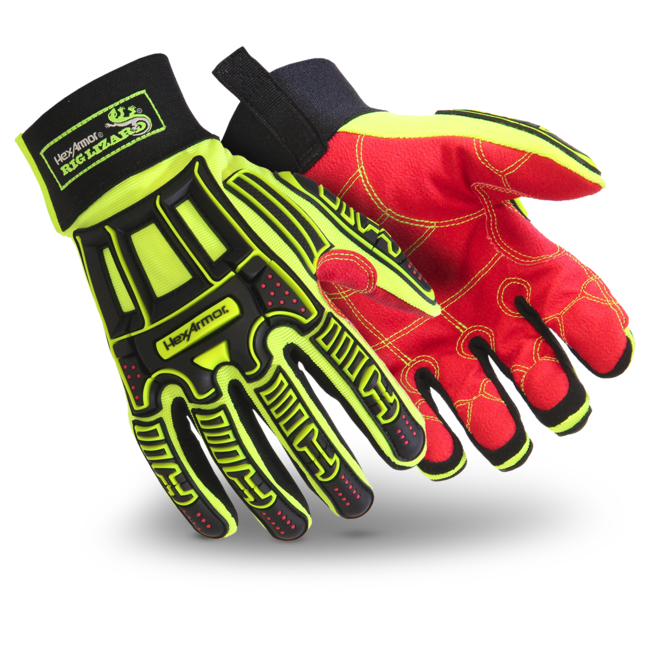The cost of workplace hearing loss – and how to prevent It
The statistics on workplace hearing damage make for grim reading. Hearing Australia’s Principal Audiologist, Karen Hirschausen says “more than 1.1...
When conducting noise surveys of workplaces, we are guided by two numbers – the average 8-hour equivalent A-weighted continuous noise exposure level (LAeq,8h) and the maximum noise level measured at any given time during the measurement period (LC PEAK). These two numbers define the noise limit for workers in accordance with work health and safety regulations.
To understand the quality of the noise level in a workplace, both numbers must be assessed simultaneously. If there is a large difference between the two for example, the weighted average (LAeq, 8h) is 86dB and the peak is 110dB (LC PEAK), it indicates that there are impulse noises present that can still damage a worker’s hearing if regularly exposed over a working life. The International Noise Awareness Day campaign advises that “Continued exposure to noise above 70dBA (adjusted decibels) over time will cause hearing loss”. This highlights that the 85dB daily exposure limit set by many work health regulations in many countries worldwide as a regulated exposure limit to prevent hearing loss is not enough to fully protect workers hearing.
If you are in a noisy environment and are not wearing any hearing protection and you must raise your voice to communicate with someone next to you, it is a good indication that a form of hearing protection is required. In addition to this, even if the measured 8 hour equivalent noise exposure of 85dB (LAeq, 8h) is not exceeded but you have impulse noise events present in your surrounding that are above 85dB or cause disruption to your concentration, the use of an appropriate hearing protection is recommended – even if it is only for the duration of the impulse noise event.
The 8-hour equivalent continuous A-weighted sound pressure level is calculated by adding all the noise events experienced during a shift and then adjusting it to an equivalent 8-hour period.
8-hour equivalent continuous A-weighted sound pressure level calculated using the below equation:

Where ti is the duration of each noise in hours and SPL (Sound Pressure Level) is its magnitude in decibels (dB). 8-hour equivalent continuous A-weighted sound pressure level calculated using the below equation:
Where ti is the duration of each noise in hours and SPL (Sound Pressure Level) is its magnitude in decibels (dB).
An impact wrench, as an example, which is emitting a sound pressure level of 120dB as measured at the worker’s ear-level for a period of 15 minutes would result in a time average of 104.95dB.
Using the same relationship, you can also calculate the maximum time a worker can be exposed to a particular noise event (sound pressure level measured in dB) before the daily limit of 85dB is exceeded.
For example, worker can be exposed to a noise event at 100dB for a maximum of 15 minutes before they exceed their daily legislative noise limit.. Likewise, a worker can only be exposed to a noise event at 110dB for a maximum of 1.5 minutes before their daily legislative noise limit is exceeded. As can be seen, exceeding the permitted legislative daily noise limit can be easily done without any realisation from the worker, thereby putting their workplace at risk of non-compliance and the worker at a significantly higher risk of hearing loss.
Examples of noise events along with their maximum duration of exposure before the daily noise limit is exceeded can be seen below:

As can be seen, exposing unprotected ears to high noise levels for even a brief period can make a worker exceed their daily noise limit very quickly.
In many industrial settings, it is better to have task-specific hearing protection procedures rather than implement the use of just one type for all workers. Having a single form of hearing protection does not consider the task at hand. This can under-protect or over-protect a worker, which in turn puts the business at risk of failing to provide appropriate hearing protection.
Supplying the most appropriate form of hearing protection is not only crucial to the compliance to work health and safety regulations by a business but essential in the conservation of workers’ hearing. A workplace noise assessment should be performed by a qualified person and the noise sources, and their quality should be understood. Hierarchy of controls should be followed to mitigate or minimise a worker’s exposure to noise. Some other factors to consider are the worker’s level of comfort, preference, and compatibility with other PPE. If a comfortable, safe level of hearing protection that is compatible with other PPE is offered, a worker is more likely to continuously wear this hearing protection, therefore, maximising the level of protection received.
The uvex xact-fit is a corded disposable earplug with replaceable pods and reusable insertion pins. They have a SLC80 of 22dB (the level of noise reduction a hearing protector is expected to provide, as measured in a laboratory setting according to AS/NZS 1270) and are classed as Class 4 hearing protectors. The replacement pods offer a hygienic solution while the reusable insertion pins simplify earplug insertion. An adjustable cord has been incorporated for maximum worker comfort.
Since the uvex xact-fit does not need to be rolled for insertion into the ear canal, they can be inserted and taken out with little effort and disruption to a worker’s workflow. They are also compatible with most PPE that are likely to be simultaneously worn by a worker requiring hearing protection, therefore, can be worn for long periods of time.

Noise dosimetry equipment measures a worker’s noise exposure level during a work shift to help determine safe noise exposure levels for workers so that a hearing protection plan can be implemented.
The average 8-hour equivalent A-weighted continuous noise exposure level (LAeq, 8h) and the maximum noise level measured at any given time during the measurement period (LC PEAK) are two measures used to assess an individual’s noise exposure level and are compared to the maximum thresholds set out by the Work, Health, and Safety (WHS) Regulations. However, noise dosimetry is poorly understood by many, and its purpose is often mismanaged. too often used as reactive measures focused on compliance with the regulations. As a result, to minimise workers’ noise exposure levels and prevent hearing loss in the workplace, an understanding of noise dosimetry is crucial.
For workers who work more or less than 8 hours per shift, the following equation is used to calculate their LAeq, 8h where:

LAeq is the equivalent continuous A-weighted sound pressure level occurring over the measured time (in simpler terms, the noise level measured in dB) and T represents the shift length in hours.
So a worker who works for 4 hours and is exposed continuously to a noise level of 85dB will have a LAeq,8h of 84.7dB for their shift – just below the legislative limit. A worker who works 12 hours and is exposed continuously to the same noise level of 85dB for the whole shift will have a LAeq,8h of 86.76dB – which exceeds the legislative limit. This is because noise exposure levels are calculated in a similar way to the dosage of medicine – concentration measured over time. The higher the concentration, the longer the time required to process the medication to a safe level. Lower concentrations will require lower processing times.
The likelihood of hearing damage increases with the noise exposure duration and is the key reason the holistic assessment of noise exposure is considered.

The statistics on workplace hearing damage make for grim reading. Hearing Australia’s Principal Audiologist, Karen Hirschausen says “more than 1.1...

Safety glasses are a critical part of personal protective equipment (PPE) on worksites Australia-wide. But the trend towards stylish safety glasses...

A guide to ISEA 138 impact standards Following the inclusion of a performance standard for back of hand impact protection in the revised...